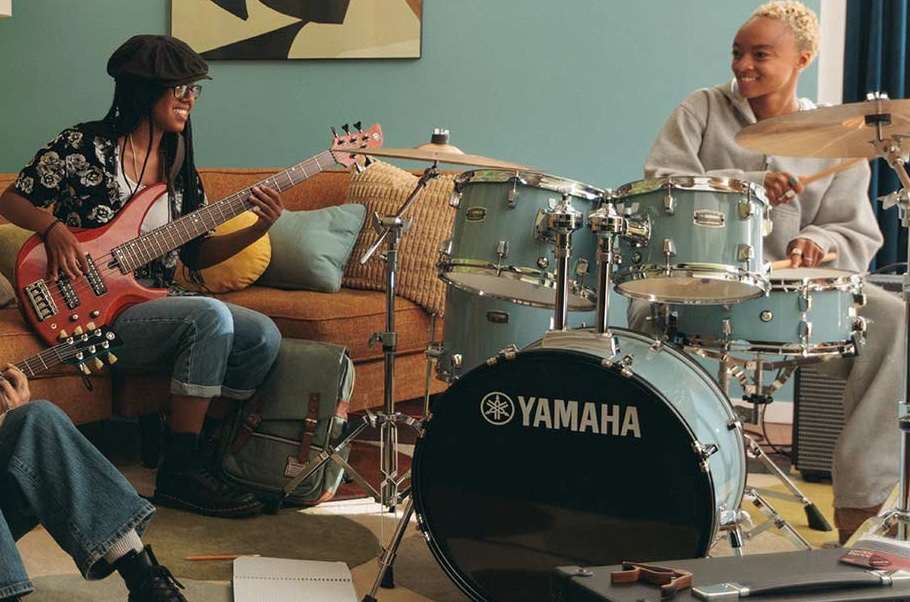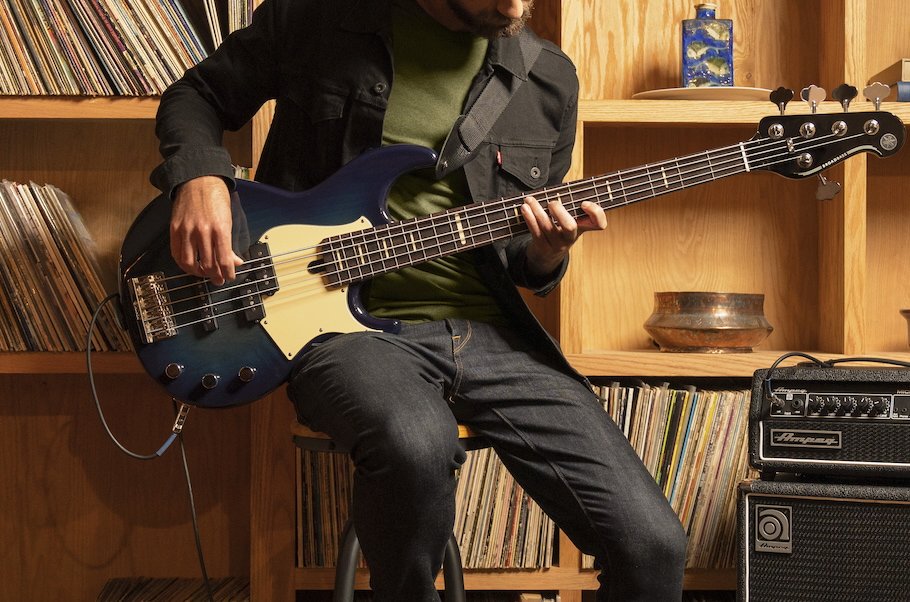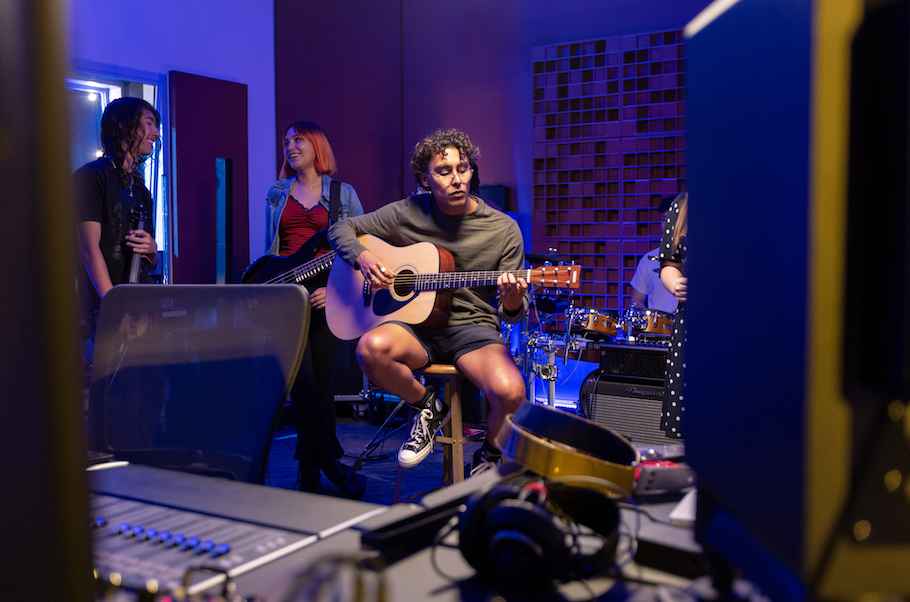How To Groove in Seven Different Musical Genres
A primer on bass versatility.
Learning to play many different genres of music is one of the great joys of being a musician. Every type of music has stylistic hallmarks, and if you aspire to masterfully communicate your feelings through your instrument, the opportunity to dip into a fresh sonic universe can be both energizing and inspiring.
In that spirit, here’s a primer on seven musical genres that every versatile bass player should be able to groove in. We’ll keep each section brief, focusing on tone, feel, rhythm, harmony and artists you should know, plus we’ll provide an audio example. Needless to say, it makes all the difference to have an instrument that can conjure any flavor you need; the Yamaha BBP35 used on all the audio clips here is easy to play and as tonally versatile as they come (as is its four-string cousin, the BBP34).


BLUES
Let’s start with the blues, which is the foundation for every genre on this list. The classic 12-bar form has many variations, but this swampy Delta blues in D chugs along on these changes:
I7 / I7 / I7 / I7
IV7 / IV7 / I7 / I7
V7 / ♭vi-IV7 / I7 / V7
Notice the brief stop on the flatted sixth chord, B♭, in measure 10. If you’re playing chorus after chorus of blues, you can keep things interesting by varying your note length, experimenting with ways to approach the I, the IV and the V. You can also mix things up by arpeggiating your chords or staying minimal, as I did; take your cues from the guitarist and drummer.
GOSPEL
Like every other genre on this list, this has many subgenres. Gospel boasts a combination of sophisticated harmony and earthy appeal, and the flavor is so distinctive that even a tiny dose can bring weight to a standard pop progression.
The audio clip below gives you a few moments of “Bless That Wonderful Name of Jesus,” a hymn that’s been a staple in Black churches for decades. This version, in A♭ major, starts with a turnaround (in this case, V-vi-ii-V-I) before walking back up to the V. After staying on the I chord for four bars, we visit the IV for two bars, then head back to the I chord, doubling the organist’s vi-ii-V-I turnaround. Two bars of I lead to a walkdown from A♭ to the vi chord (Fm), which launches us into a iii-vi-ii-V turnaround and that walkup to the V.
Here’s what it looks like:
I7 / I7 / I7 / I7
IV7 / IV7 / I- vi-ii-V
I7 / I7 / I7 / vi
iii-vi/ii-V / I
Turn up your lows, squash the highs, dial in the mids and stay on top of the beat while keeping an eye on the keyboardist’s left hand.
FUNK
Thanks to great players like Larry Graham, Louis Johnson and Flea, slapping and popping are essential items in any funk bass player’s vocabulary — but that doesn’t necessarily mean you have to take up lots of room.
This throwback track with horns begins on a C7 groove that seemed perfect for a fingerstyle call-and-response between the low C (on the first fret of the B string) and the high C at the 17th fret of the G string. When the track settles into the C-B♭7-Am7(11)-B♭7 chorus, opening up both pickups on my BBP35 and turning up the tone knob, along with a syrupy slow slap line, delivered the vintage vibe the producer needed.
R&B
There’s nothing like the languorous feel of an R&B ballad, and the bass player’s responsibility is to make it feel good. This isn’t the place for flurries of notes or busy slapping: If you’re deep in the pocket, you can get away with just playing roots, fifths and octaves, leaving room for the occasionally spicy fill. Lay back, enjoy the long notes and be ready to approach the track as a keyboard bassist would; with all the highs shaved off, the BBP35 makes a fine substitute for synth bass.
REGGAE
Most working bass players who’ve had to play reggae understand the cardinal rules: Be melodic, lay waaaay back and do whatever it takes to never, ever have treble in your tone. Understanding the chord changes will help you outline chords appropriately, and being in sync with the drummer is crucial. An electric bass with flatwounds or old roundwounds is most commonly used here. For inspiration, listen to Aston “Family Man” Barrett, best known for playing with Bob Marley and the Wailers and Robbie Shakespeare, the session kingpin who co-led Sly & Robbie.
Basslines in reggae can be quite sparse, but the busier approach in the audio clip below matches the insistent “four-on-the-floor” drum pattern. In addition, I muted with my palm for an extra-thick tone as I riff on G minor.
SAMBA
Samba is a broad term for many of the rhythms that underpin the Brazilian musical genres that originated in Afro-Brazilian communities in the late 19th century and early 20th century. The kick drum is the heartbeat of a modern samba feel, and the bass parts, most commonly root-V, wrap themselves around the kick.
The audio clip below starts with an up-tempo, active piano part in C. I was tempted to complement it with a busy bass part, but decided instead to hold back so I would have somewhere to go as the track progressed. This spacious approach reinforces the C root with a low C on the first fret of my BBP35’s B string, alternating with the fifth (G on the third fret of the E string), and the C at the third fret of the A string. In the next section, which has a C7 (maj7, 9, 11) feel, the bass climbs up the C major scale by playing C (and its V, G), D (and its V, A), F (and its V, C) before heading back to the top and ending with a fill.
DANCE
If you’re asked to play on a track with kicks on the quarter notes, let the four-on-the-floor beat give you the freedom to be as repetitive or as melodic as you want to be. Depending on which subgenre you’re visiting, the chords may be stark and minimal or lush and soulful, and you can easily make either electric or synth bass fit. Playing roots and chord tones is always a safe bet, but instead of outlining the chords in this Fmaj-Gmaj-Am progression, I soloed the BBP35’s back pickup and played a melodic Gmaj figure, repeating it with slight variations.
There are lots of ways to pick up new styles: Listen extensively, play along with music you like, study charts and method books, and watch videos by bassists you respect. If you are inspired by a particular tone or feel, try replicating it on your instrument. No matter the genre, pay attention to the drummer’s foot and the keyboardist’s left hand. Playing even a little bit of keyboard can also make a big difference.














